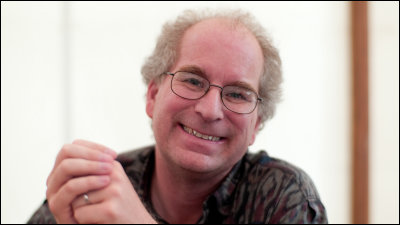The National Museum of American History restores hundreds of the world's oldest recordings, including the voice of Graham Bell

by
Speaking of Graham Bell, he is the person who invented the world's first practical telephone and is a famous scientist who made a great contribution to the development of communication technology. From such valuable experimental records of Bell, the National Museum of American History in the United States has begun work to restore the recording of the human voice, which was previously unplayable.
National Museum of American History Will Preserve Alexander Graham Bell's Experimental Sound Recordings | Smithsonian Institution
https://www.si.edu/newsdesk/releases/national-museum-american-history-will-preserve-alexander-graham-bells-experimental
The Smithsonian Will Restore Hundreds of the World's Oldest Sound Recordings | Smart News| Smithsonian Magazine
https://www.smithsonianmag.com/smart-news/smithsonian-will-restore-nearly-300-never-before-heard-recordings-by-alexander-graham-bell-180981440/
Bell died in 1922, but in recent years no one knew what his voice sounded like. But in 2013, researchers restored some of Bell's experimental recordings, making it possible to listen to previously unplayable recordings of Bell.
You can hear Bell's real voice by playing the following audio. Bell says 'Hear my voice'.
Researchers at the National Museum of American History will continue the restoration work, making available nearly 300 recordings that have been in the museum's collection for more than a century but have never been heard. . Twenty recordings have already been restored, and the voices above are just a few of them. This recording is said to be the only bell voice that remains on record.
Between 1881 and 1892, Bell conducted experiments at the Volta Laboratory in Washington, DC and Bell's own estate in Baddeck, Nova Scotia, recording numerous audio recordings by Bell and colleagues. Bell had been recording to discs made of cardboard and wax, but until 2013 it remained unclear how to reproduce them.

But thanks to intensive research by experts at the National Museum of American History, the Lawrence Berkeley National Laboratory, and the Library of Congress, a method of audio reproduction using optical scanning and digital conversion has been established that has been heard for over a century. It seems that they were able to restore the sound source that could not be done.
Investigation of more than 200 unanalyzed discs is scheduled to begin in the fall of 2023. Anthea Hartig of the National Museum of American History said, 'For more than a century, we are preserving nearly 300 recordings that have gone unheard and making them available for playback for the first time. This is a dynamic and innovative project. We are grateful to the public-private partnerships for funding the
Related Posts:
in Posted by log1p_kr







